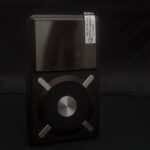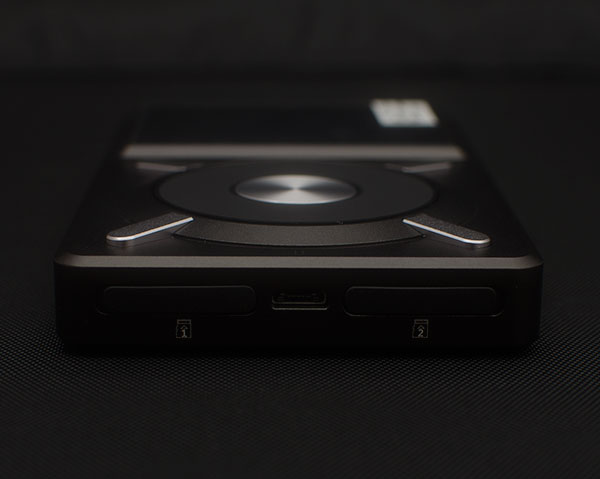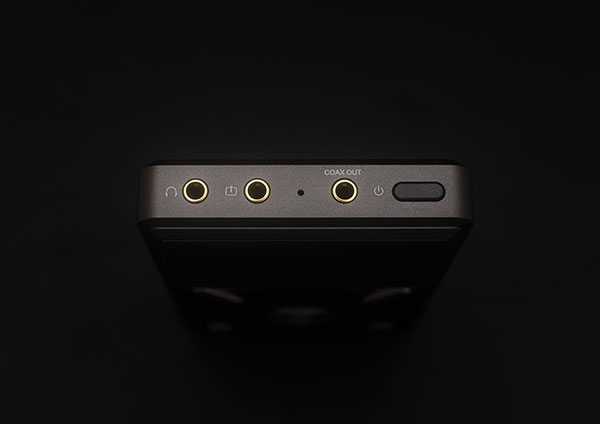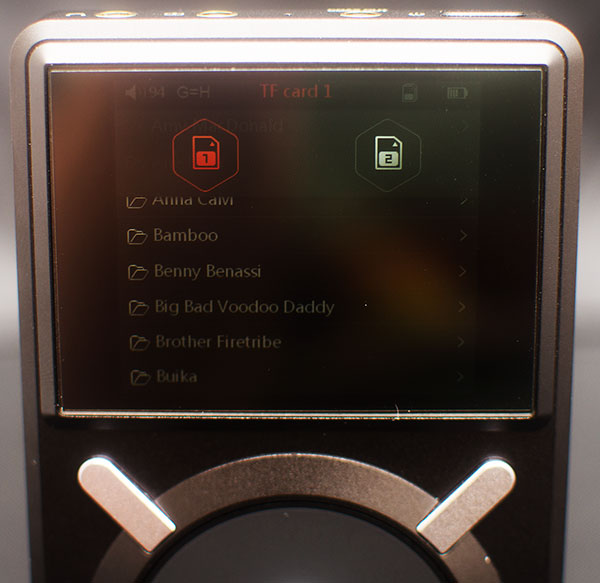The FiiO X5 is the second digital media player launched by the company and a class higher than the original X3 DAP. It is priced at $350
Disclaimer: The FiiO X5 sent to us is a sample in exchange for our honest opinion. We thank FiiO for this opportunity.
To learn more about FiiO reviews on Headfonics you can click here.
Note, this article follows our latest scoring guidelines which you can read up on here.
Last year I reviewed the X3 and thought it a very good release from FiiO but with a UI that had some growing pains and a design that was not that appealing in aesthetics but certainly functional and well built.
I also remarked on the viability of the X3 in today’s hi-tech DAP market given its slightly aged looking design and hardware controls that were slightly behind more modern DAPs but overall the tonality and the codec coverage were excellent and represented a decent start into the DAP market.
Feedback
Since then the X3 has had a ton of feedback both positive and negative and further than that FiiO have been true to their word in reflecting that feedback with regular updates in the firmware to combat the UI and media library issues and also releasing new features such as DAC functionality.
As a result, the X3 is a popular underdog with plenty of audiophiles and at the sub-$200 price point its seems to have performed pretty well.
FiiO though are never one to rest on their laurels and with the launch of the new X5 FiiO have well and truly stepped out of the budget audiophile market with a DAP that is aimed squarely at the mid-fi audiophile who values a high-end DAP but maybe can’t quite reach the heights of the AK100 or the HM901.
At $350 SRP the X5 is a bit of a bargain, packs most of the modern features you could want into a modern DAP, a big step up from the resolution and tonality of the x3 and importantly, oh so importantly, it works right out of the box without freezing or huge bugs. The value of the learning curve with the X3 now seems very much present in the x5.
X5 Hardware
The X5 takes on a decidedly familiar form factor with one or two important tweaks. From the pictures, it is easy to mistaken its size as somewhat svelte and thin and iPod like but in reality it is actually about 25% bigger than a classic holding more common ground with the size and thickness of earlier iPod generations.
It is also extremely well built and feels very solid. It is not the lightest DAP either weighing in at 195g which is 55g more than the iPod Classic in its current incarnation and 54g more than the Ibasso DX50. But what you do get is that familiar precise machine-cut tight black CNC aluminum unibody seen before on some of FiiO’s amplifier units and nothing creaky or plasticky like the older but similar priced HM-601/2 from Hifiman.
Front
The front face of the X5 sports a very well implemented jog wheel selector system and an IPS 260k 2.4 inch screen. Actually the screen is a bit of a trick because the physical screen seems more like a standard 3-inch screen until you turn it on and realize there is a very thick black bezel surround the smaller 2.4-inch screen which personally I found a bit underwhelming.
Good thing its IPS though as it comes across as clean, clear with a very good viewing angle and, depending on your screen protector of choice, matte or clear, should do a decent job under sunny conditions. It is not touchscreen unlike the Ibasso DX50/100 series but given the complexity of the UI and the completeness of the jog wheel system I don’t think that is ever going to be an issue.
Keys
Surrounding the jog wheel system is a 4 prong short key setup in the shape of an X which although do not sport any decals indicating what they do, they do not possess any high learning curve once you get into the UI and start using them.
The keys have both a long press and short press function with a long press on the left and right returning to the main menu and long press on the lower left and right allowing you to fast forward or rewind during playback.
On short press the left brings up any relevant shortcuts depending on what screen you are on and the right allows you to return out of the current screen. On the bottom left a short press will allow you to change track to previous played and conversely right allows you to go to the next available track.
Handling
The buttons are pretty tactile and precise with little sponginess. There can be an ever so slight delay in click to event depending on where you are in the UI but hardly ever noticeable after prolonged use. The odd time I was slightly unsure with the UI on what button to press but I consider it just initial learning issues and within 30 minutes of constant use everything felt natural intuitive and a whole lot easier to manage and use than the X3 and DX50. I do think the DX50 buttons are just about the simplest and coolest you can have but the X5 does give you a bit more control
As for the rest of the physical buttons the volume is a split up and down button on the left side of the player and the power button is on the right side of the panel. The volume buttons are a little bit tighter in terms of volume control than the DX50 but there is almost a delicious and ironic poke at the early DX50 UI volume control problems with a long press up and down allowing it to slide a bit more and a short press being more precise in the control.
Jog Wheel
As for the jog wheel itself, although semantics with an iPod are strong from a distance, closer up and in actual use the jog wheel is in actual fact quite mechanical using an alps type setup with resistance clicks roughly equivalent to a clock face on each hour. The concept behind this is quite the opposite of the touchscreen with FiiO claiming the combination of physical buttons and the mechanical wheel will make the X5 very fluid and easy to operate whether you can physically see it or not. IN truth this is not such a far fetched claim and I have not felt this at ease operating a DAP since perhaps the old H140/H120 and the early gen iPod which also sported a more mechanical wheel.
Features
The X5 has a ton of very relevant features and builds on FiiO’s growing confidence from the initial growing pains of the X3 as a DAP as well as the extra wiggle room you get with $350 SRP.
Outputs & Memory
The top panel of the X5 has the headphone, line and coaxial output giving you pretty much the standard options FiiO have given on a number of devices before bit on the bottom a newer development, quite apart from the USB 2.0, you also have two TF Card slots (MicroSD) allowing the FiiO X5 to take up to 128GB (2x64gb) in external memory. Which is great considering the X5 has no internal onboard memory to speak off.
Clearly a cost decision and possibly frees up a little PCB space inside but before you rush out to get 2 x 64Gb there is also the mention that future firmware upgrades will not only offer the now hip and trendy DSD capability but also the ability to take 2 x 128GB TF cards.
Luckily my AK100 cards 64GB cards fitted in pretty easily but I do have a slight worry about the rubber flaps which remind me of some old feature phone pull-back rubber flaps. Certainly a grade or two lower than the rather neat little Ak100 slide door for their card slots and a slight question over their durability.
Amplification
Inside the casing the X5 is packing a lot more punch than the X3 with no less than four Texas Instruments OPA1612 opamps and the Burr-Brown/TI PCM1792 DAC as well as dual TI LMH6643’s for headphone output.
Gone is the older warmer and musical WM8740 from the cheaper X3 DAC and in comes the more expansive, neutral and cleaner and more in line with the new sound from FiiO first heard on the cheaper E18 with the PCM1795 and now much more evolved on the X5.
The X5 is not just a DAP either. Much like the X3, the X5 can double up as a dedicated DAC/AMP or DAC with line or digital output to another system component from your PC or MAC. The X5 is a fairly capable DAC also with Asynchronous USB DAC functionality at a more than respectable 192K/24B.
Drivers
Sadly it is not ‘plug and play’ and it is not immediately obvious from the manual you had to download the driver but eventually it clicked given my experience with recent DAC’s all starting to use proprietary drivers but for others, this could have been a bit more obvious.
If you don’t fancy that and can’t wait for 128GB TFCards then you can soon also activate USB OTG capability using the existing USB port for extended memory capability and I hope digital audio out. Now whether that will be the case or not I am not sure simply because on this unit DSD and USB OTG have yet to be activated by FiiO but it is on the road map on future firmware updates thankfully. When it happens we will update this article.
DAC
The X5 codec support, much like the X3 is pretty comprehensive, supporting DSD (with a promised firmware upgrade), APE, FLAC, ALAC, WMA and WAV and packing it with Flac was a pretty simple task using the TFCards system.
Battery
Battery power on the X5 is pretty respectable 3700mAh 3.7V lithium polymer battery and provides somewhere in-between 10-13 hours of playback which to be honest for an audiophile DAP at this level is above average. Specs say 12-15 hours but real-time it was about an hour or two lower on pure FLAC for me.
X5 Software
Both the X3 and the Ibasso DX50 UI and general software usability was a bit messy when the X3 and DX50 first came out. Since then things have settled down a bit and from FiiO’s perspective what was learned in the X3 feedback was implemented rather well in the X5.
Quite apart from the precise and mechanical hardware button control system which makes the X5 a bit of a breeze it is also ably helped out by what I would consider a pretty mature and bug-free UI already. Those who were there on day zero of the X3 and DX50 are going to find the X5’s UI already smooth and snappy out of the box with not a single freeze or lock up experienced throughout this review.
Below is a fairly comprehensive review of the UI options and features at your disposal from Panda Tech review on YouTube which to be frank saves me a whole lot of pages of UI explanation and instead allows me to focus on some of the more important elements:
Home
The home screen itself shows a nice harmony with the jog wheel selector system with the menu system and home page design looking and acting much like the jog wheel as you turn it around. More than 3 clicks to access anything has been a time-honored rule for me for years as a useful guide for well-implemented software and certainly, this seems to be the case with the X5.
Importantly for me most of the immediate options I would want to use on a DAP are right there on the home screen negating the need to go any further than one to two clicks and cleverly within the page of your choice with the click of the left “x” button you can access some simple mini-menu’s that expand your capabilities within that screen which is a really nice touch.
For example, click on the file browser on the home page and then left-click and you the option of choosing which TFCard you want to browse and select from. Sadly it doesn’t integrate the cards which is what the media library option does if you have your music properly tagged but the filer browser is very well laid out and snappy with minimal lag.
Media Library
If you want immediate access to the media library you will need to do an initial media library update which for around 4000 FLAC files on 2 64Gb TF Cards for me took around 8 minutes to complete the first time around but after which it was much faster and importantly very stable with little or no tagging errors in the resulting library.
Sadly though the one area the UI has not progressed for my liking is in the media library itself with the structure much like the initial DX50 and X3 being far too flat after choosing either artist, album or genre. You simply get one long list of songs with no subdivision.
For example, Genre should really be followed by artists and album and then songs, but sadly you just get songs. The album listing is worse with just a list of albums and no artist title meaning the really the fastest way is through the file browser for me personally. The media library, though fast and responsive, does need a much deeper and better-defined sub-structure beyond the initial headings.
EQ
The X5 also sports a fairly well-defined 10-band equalizer with a number of presets, a favorites option, and in-play settings such as gain, gapless playback, volume memory control for power on and off as well as a balance settings for left and right which for some has been one of the main reasons why they buy FiiO products given this has been in place since the E17.
Overall the X5 is probably FiiO’s most mature UI to date. Nothing seems to be out of place. It is very fluid and the drill-down is within 3 clicks in most paces just that media library is a bit too rough and ready for me in terms of depth and structure despite how fast and accurate it is after the first scan.
Click on the next page below for sound impressions.









